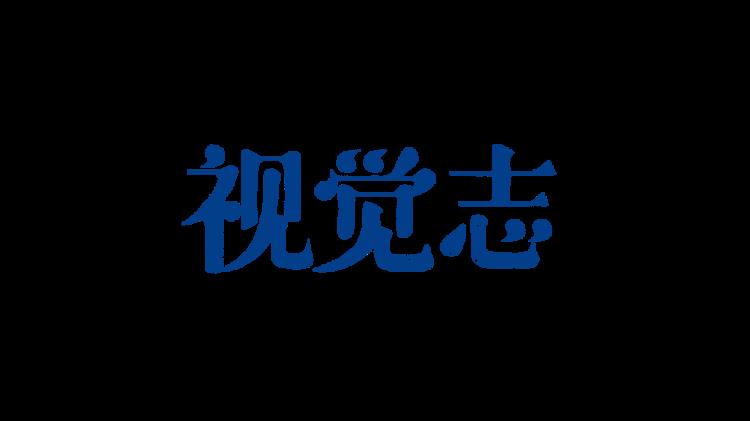2020中考英语动词时态超全必考点梳理值得收藏的干货
动词是表示人或事物的动作、存在、变化的词。分析历年的中考不难发现,动词是每次考试的重点词法,动词部分主要考查学生对主动结构中各个时态的运用,一般现在时、一般过去时、一般将来时、现在进行时和现在完成时出现的概率较高。
一、动词的种类
根据其词义和其在谓语中的作用可分为实义动词、助动词和情态动词。根据其在句子中的功用可分为及物动词和不及物动词,连系动词界于两者之间。
1)实义动词:意义完整,能独立用作谓语。
如:watch,run,open等。
2)连系动词:是一个表示谓语关系的动词。它必须在后面接表语(通常为名词或形容词)。
如:seem,look,smell,taste,sound,get,become,turn,be等。
3)助动词:本身没有词汇意义,不能单独用作谓语。在句中与实义动词一起构成各种时态、语态、语气以及否定和疑问结构。
如:do,does,did等。
4)情态动词:词义不完整,在句中不能单独作谓语,只能与实义动词一起构成谓语。
如:can,may,must,need,ought to等。
二、常考的八大时态的用法
1、一般现在时的用法
1) 表示经常性或习惯性的动作。
如:I leave home for school at 7:00 every morning.
我每天早上7点钟从家里去学校。
2) 表示普遍真理,客观存在,科学事实等。
如:The earth moves around the sun.
地球围着太阳转。
2、一般过去时的用法
1)在过去时间里所发生的动作或存在的状态。
如:Where did you go just now?
刚刚你去哪里啦?
2)表示在过去一段时间内,经常性或习惯性的动作。
如:When I was a child, I often played football in the street.
当我是小孩时,我经常在街上踢足球。
3、现在进行时
1) 表示现在( 指说话人说话时) 正在发生的事情。
如:We are waiting for you.我们正在等你。
2)表示长期的或重复性的动作,说话时动作未必正在进行。
如:Mr. Green is writing another novel.
梅林先生正在写另一部小说。
(说话时并未在写,只处于写作的状态。)
3)短暂性动词的进行时一定表示将来的含义。
如:We are arriving at London.
我们将要去伦敦 。
4、过去进行时
1)过去进行时主要表示过去某个时刻正在进行的动作,常和表示过去的状语连用。
如:What were you doing at nine last night?
昨晚九点的时候,你在做什么?
2)过去进行时也可以表示过去某一段时间内正在进行的动作。
如:From 1983 to 1998 , he was teaching at Yale .
从1983到1998年,他正在耶鲁大学教书。
5、一般将来时
1)表示将来某个时间要发生的动作或存在的状态,也表示将来经常或重复发生的动作。
2)will do
表示主观意愿做某事。
如:I will see a movie this morning.
今天早上我要去看一部电影。
表示客观的不以人的意志为转移的客观将来。
如:Fish will die without water.鱼儿离开了水就会死。
3) be going to do
表示计划,安排要发生的事。
如:The play is going to be produced next month。
这个电视剧下个月就会被制作出来。
6、过去将来时
立足于过去某一时刻,从过去看将来,常用于宾语从句中。
如:Wang Lei said that she was going to visit her uncle next Saturday。
王蕾说她下周六将要去看望她的叔叔。
7、现在完成时
1)表示过去发生或已经完成的某一动作对现在造成的影响或结果。
如:I have finished my homework. 我做完家庭作业了。
(过去某时开始做,到现在已完成。)
2)表示:过去已经开始,持续到现在的动作或状态,并且有可能继续下去。
如:I have studied English for six years.
我已经学了六年英语了。
8、过去完成时
1)以过去某个时间为标准,在此以前发生的动作或行为,或在过去某动作之前完成的行为,即“过去的过去”。
如:As soon as we got to the station, the train had left.
当我们一到达车站时,火车已经开走了。
三、中考考点梳理
一、一般现在时: 表示现阶段经常或习惯发生的动作或存在的状态,或说明主语的特征。
(1)一般现在时的构成:
一般现在时主要用动词原形表示,如果主语是第三人称单数则在动词原形后加“-s”或“-es”。(动词第三人称单数)
(2)一般现在时的用法:
① 表示经常性或习惯性的动作或存在的状态。与一般现在时连用的时间状语:
*表示频度的副词always,often,usually,sometimes等。
*on Sundays,on Monday afternoon,every day,in the morning,every year等时间状语。
*once a year, twice a month, three times a week之类的表示频率的词组。
如:He gets up at five o’clock every day.他每天5点起床。
He often plays football. 他经常踢足球。
② 表示客观真理、事实、人的技能或现在的状态时句子里一般不用时间状语。
如:The earth turns round the sun.地球绕着太阳转
Light travels faster than sound.光传播比声音快
③ 表示十分确定会发生(如安排好的事情)或按照时间表进行的(将要发生的)事情,用一般现在可以表达将来,句子中可以有将来时间。
如:The train for Hankou leaves at 8:00 in the morning. 开往汉口的列车上午8点开车
在时间状语从句中(以when, after, before, while, until, as soon as等引导)和条件状语从句中(以if, unless引导),用一般现在时代替一般将来时,句子可以有将来时间。
如:Please ring me up as soon as you arrive in Germany.你一到德国就给我打电话
If it rains tomorrow, we will have to stay at home.如果明天下雨我们就只好呆在家
④ 一般现在时用于倒装句中可以表示正在发生的动作,动词以come, go为主。
如:Here comes the bus. 车来了
There goes the bell.铃响了。
⑤ 一般现在时常用于体育比赛的解说或寓言故事中。
如:Now the midfield player catches the ball and he keeps it. 现在中锋拿到了球,带球跑。
二、一般过去时:表示过去某时发生的动作或状态,这种动作或状态可能是一次性,也可能经常发生。(过去常常做某事也可用used to do sth来表示)
① 表示过去具体时刻发生的一次性动作时
时间状语有:at (eight) (yesterday morning),(ten minutes) ago, yesterday, last week, some years ago, in 1995, in the past, the other day, at that time, just now等。
* when引导的时间状语从句。
如:I got up at 6:00 this morning.我今早是六点钟起床的
Little Tom broke the window at half past nine this morning.小Tom今早9点半打坏了玻璃。
When he went into the room, he saw a stranger talking with his father.
He came to our city in the year 2000.他2000年来到我们市
② 表示过去一个阶段中经常发生的事情时
时间状语有:last…, in…, from…to…, for(10 years),often, usually, sometimes, always, never等。
如:Mr Jackson usually went to evening schools when he was young.杰克逊先生小时候经常去夜校。
③ 讲故事、对过去经历的回忆、双方都明白的过去事件等一般用过去时,而且经常省略时间状语。
如:I happened to meet Rose in the street.我正好在街上遇到露西
注意:有一些容易变化错误的单词,如:prefer→ preferred, fix→ fixed, mix→ mixed
三、一般将来时:表示将来某一时刻或经常发生的动作或状态。
①一般将来时的时间状语有:
tomorrow, this (afternoon),next (year),one day, soon,
someday, sometime, in the future, in 一段时间; when/ after等引导的状语从句的主句中。
如:I will call you when my mother comes back.当我妈妈回来我会打电话给你。
②用will构成的将来时,表示动作与人的主观愿望无关。“shall”用于第一人称。“will”用于所有人称。
如:I will graduate from this school soon.我很快就会从这所学校毕业。
③表示有礼貌地询问对面是否愿意或表示客气的邀请或命令时。(不用be going to)
如:Will you please lend me your bike?你会借自行车给我吗?
④表示意愿时。(不用be going to)
如:
We will help him if he asks us.
如果他请我们,我们愿意帮助他。
⑤表示单纯性的将来,与人的主观愿望和判断无关时。(不用be going to)
如:The sun will rise at 6:30.
太阳将在6:30升起。
⑥“be going to 动词原形”表示打算或准备要做的事情,或者主观判断即将要发生的事情或有某种迹象表明要发生的事。
如:It’s going to rain soon.天快要下雨了
⑦现在进行时、一般现在时也可以表示将来。(见相应时态)
⑧shall和will 在口语的一些疑问句中相当于情态动词,表示征求对方意见或请求。Shall一般与第一人称连用,will与第二人称连用。
如:Shall we go to the zoo next Saturday?我们下周六去动物园好吗?
Will you please open the door for me?替我把门打开好吗?
⑨ “be about to 动词原形”和“be to 动词原形”结构表示按照计划即将发生的动作。
如:Tom told her that he was (about) to go abroad.Tom告诉她说他要去国外了。
四、现在进行时:现在进行时表示现在正在进行的动作或是现阶段正发生而此刻不一定在进行的动作。
(1) 现在进行时由“助动词be (am is are ) 现在分词”构成。
(2)现在进行时的用法
①表示此时此刻正在进行的动作。常与now, look, listen, at the moment等连用。
——What are you doing? ——I’m reading English.
②表示现阶段正在进行的动作或持续的状态。常与these days等时间状语连用。
They are studying hard this term. 他们这学期学习一直很努力。
My father is writing a novel these days.
(3)位移动词:go,come,leave,stay,start,begin等,常用进行时表将来。表示即将发生或安排好要做的事情。
We are leaving for London soon. 我们很快就要动身去伦敦了。
She is going there tomorrow. 她明天要去那里。
I’m coming now.我就来
(4)表示频繁发生或反复进行的动作,常与always等频度副词连用,以表示赞扬、不满或讨厌等感情色彩。
如:He is always borrowing money from me and forgetting all about it a few days later.
(5)但应注意下列这些动词一般不用于现在进行时态的句子中。
A、表示感觉的动词。如see,hear等。
B、表示喜欢或厌恶的动词。如like,love,hate等。
C、表示希望的动词。如want,would like等。
D、表示状态的动词。如be等。
E、表示归属的动词。如have等。
F、表示思维、知识或理解能力的动词。如know,think,forget等。
五、过去进行时:过去进行时表示过去某一时刻或某阶段正在进行的动作。
① 过去进行时由“was(第一、三人称单数)或were(第二人称单数和各人称的复数) 现在分词”构成。
② 过去进行时的时间状语有:then, at that time, this time yesterday, at (eight) yesterday (morning),以及由when/while引出的时间状语从句。
如:He was cooking supper this time yesterday.昨天这个时候他正在做晚饭)
The little girl was playing with her toy when I saw her. 当我看见小女孩时她正在玩玩具娃娃。
③ 用于宾语从句或时间状语从句中,表示与主句动作同时进行而且是延续时间较长。句子中通常不用时间状语。
如:She saw it happen when she was walking past.她路过时看到事情的发生)
Father was watching TV while mother was cooking supper.妈妈在做晚餐而爸爸正在看电视。
④ 也可以表示过去一个阶段频繁发生或反复进行的动作,常与always等频度副词连用,以表示赞扬、不满或讨厌等感情色彩。
如:He was always borrowing money from me when he lived here. 他住在这里时老向我借钱
六、现在完成时:现在完成时表示一个发生在过去的、对现在仍有影响的动作,或表示开始在过去,并且一直延续到现在,甚至还可能延续下去的动作。
①在完成时由“助动词have (has) 动词的过去分词”构成。
②表示发生在过去的对现在仍有影响的动作时,时间状语有:already, yet, just, once, twice, ever, never, three times, before等。
如:I have never seen such fine pictures before. 我以前从来没有看过这么好的画)
He has just gone to England.他刚去英国
③表示在过去开始一直延续到现在(可能延续下去)的动作或状态时(肯定句或疑问句中动词必须用延续性动词),时间状语有:for (two years),since 1990, since (two weeks ago)和since引导的状语从句。
如:I have been away from my hometown for three years.我离开家乡有3年了 = I have been away from my hometown since three years ago.
= I have been away from my hometown since 2005.
= It is 3 years since I left my hometown.
④ 口语中have got往往表示have(有)的意思。
如:They have got thousands of books in their library.他们图书馆有上万本书
⑤have been to与have gone to的区别:have gone to(“已经去了”)表示人不在这里,have been to(“去过…(次)”)表示人在这里。
如:--Where is Mr Li? -–He has gone to the UK.李先生在哪里?他去了英国。
I have been to Beijing three times. 我去过那里三次。
⑥在完成时中,一个瞬间性动词(一次性动作)不能与表示一段时间的状语连用,此时须将该瞬间动词改为延续性动词或状态动词。
come→be here, go→be there, die→be dead, borrow→keep, buy→have, join→be in(be a member), leave→be away, begin →be on等。
使用下面这个句型:
It is / has been (多久) since 主语(人) 谓语(过去时) …… 过去时间状语
[注意] 在其它的时态中也存在类似问题,记住,关键是:瞬间动词不能和表达一段时间的状语连用。
如:How long may I keep the book?这本书我能借多久?(句子中keep取代了borrow)
七、过去完成时:过去完成时表示过去某一时间或某一动作发生之前已经完成的动作。
简言之, 过去完成时所表示的时间是“过去的过去”。过去完成时在句中使用时一般必须有一个或暗含一个发生在过去的动作与其相比较,使用过去完成时的动词动作发生在该过去的动作之前。
①过去完成时由“助动词had 动词的过去分词”构成。
②过去完成时时间状语有:
by (yesterday), by then, by the end of (last…)或者由when, before等引出状语从句。有时句子中会有already, just, once, ever, never等词语,也会有for… 或since…构成的时间状语。
如:They had already finished cleaning the classroom when their teacher came.
The woman had left before he realized she was a cheat.
She had left by the time I arrived. 我到达以前,她已经离开了。
He had lived in Shanghai for ten years before he came here.
I met Tom in the street yesterday. We hadn’t seen each other for 3 years.
③过去完成时常用于宾语从句、after引导的从句,或者从句是before引导的主句中。
如:After I had put on my shoes and hat, I walked into the darkness.
He said that he had never seen a kangaroo before.
(直接引语中的过去时或现在完成时,改为间接引语时常改为过去完成时)
八、过去将来时 表示从过去某一时间看将来发生或预计将要的动作或存在的状态。
①过去将来时由“助动词should(第一人称)或would(第二、三人称) 动词原形”构成。在美国英语中,过去将来时的助动词一律用“would 动词原形”。
②过去将来时常由于宾语从句中,时间状语有:later, soon, the next (day).
Tom told me (that) he would go swimming the next day.
③表示曾经打算或准备要做的动作,用were/was going 动词原形。
I thought it was going to rain soon. 我原以为马上就要下雨了。
They were going to start a new job when I saw them then.
④ go,come,leave,arrive,start等位移动词,其过去进行时表示过去将来时。
【例1】Too many people were absent. The chairperson
warned that he was leaving the meeting if necessary.

特别声明:所有资讯或言论仅代表发布者个人意见,乐多体育仅提供发布平台,信息内容请自行判断。
-
 动词是表示人或事物的动作、存在、变化的词。分析历年的中考不难发现,动词是每次考试的重点词法,动词部分主要考查学生对主动结构中各个时态的运用,一般现在时、一般过去... (查看全文)2022-12-10 | 阅读:222次
动词是表示人或事物的动作、存在、变化的词。分析历年的中考不难发现,动词是每次考试的重点词法,动词部分主要考查学生对主动结构中各个时态的运用,一般现在时、一般过去... (查看全文)2022-12-10 | 阅读:222次
- 特别声明:本站所有直播和视频均来自互联网,本站不从事任何经营业务,仅为体育爱好者提供免费赛事数据服务。备案号:苏ICP备2020049342号广告合作@huzhan6688:QQ:95498723










